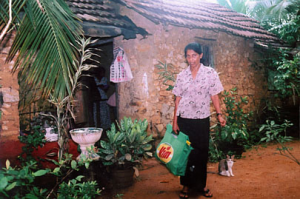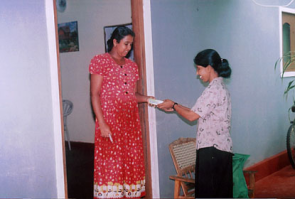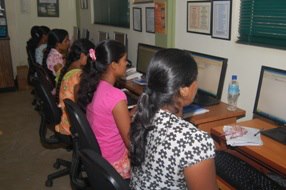“This was a great opportunity for me to start a small business. First I started going from house to house by foot. Then my husband joined me on a bicycle. We next bought a small three-wheeler and finally we started a small boutique in our house. My whole family is involved in our business now” An enterprising sales woman beams as she shares her short story about her long journey to prosperity.
A multinational company (MNC) in Sri Lanka decided to empower a group of rural women to be their ‘barefoot salesmen’. These women were provided with products on credit, trained on product attributes and basic selling techniques prior to launching this novel initiative. Two months later, when the company representatives met them, these women showed great promise in achieving the set targets, felt happy that they were making progress, but fell short in identifying what their profits were. The fact remained that the MNC didn’t quite assess the need gaps that had to be taken care of from the beneficiary’s point of view. Instead they focused more on the company objectives, initially.

However, once they understood the need to train, supervise, empower and hand hold the beneficiaries until they were steady on their own feet, the MNC went all out to train these women not just on financial management, but a myriad other business and social skills. Today, they are a force to reckon with and a noteworthy success story with 3500 women from 3500 villages (out of 14,000 villages in the country) benefiting from this social entrepreneurial initiative, making a much needed income for themselves. These women not only sell goods, but have taken leadership roles and act as change agents in their respective villages.
If social entrepreneurs (SE) are those who drive social innovation and transformation in various fields including education, health, environment and enterprise development, why then is this concept not flying?
Not having a clear mission for the project, reinvesting a majority share of the profits back to the project and not clearly mapping out the sustainability of the project before starting off on a journey of social entrepreneurship are some of the reasons why the concept hasn’t worked well in the context of ‘sharing prosperity’ in the broader agenda of ‘poverty reduction’.
I have come across three types of SEs. Those who knowingly exploit the less privileged, those who do not know how to innovate and transform the less privileged while making use of them and those who make a conscious effort to transform the underprivileged groups within a profitable business and financial frame work.
There are proven best practices that can help make SE a sustainable business formula. The key is to help build capacity of the entrepreneurial partners to empower themselves. A genuine interest to transform the beneficiary’s financial and social status in the long term in a sustainable manner is an important attribute. Making the partnership truly equitable, sharing information and knowledge that would adequately empower the less advantageous partner, making sure adequate resources are available to support them with financial aid, technical and technological support, marketing and sales support are a few basic ingredients that can help develop this very self-fulfilling social transformation. Most important of it all is creating wider awareness about the value and gratification one can derive by getting involved in SE.
Here is another such example that has proven the impact of a carefully planned and executed SE success story.
A well respected local private sector conglomerate has embarked on a very successful SE model as an important pillar of their Corporate Responsibility commitment. The model is designed to create wealth amongst rural youth in Sri Lanka. IT is the preferred tool in this instance for social innovation, since it’s the easiest platform to of build bridges between many diverse groups. At the outset the conglomerate partnered with a Not-for-Profit Foundation who designed the SE model which to date continues to provide oversight and mentoring for the rural associates. As owners of their own Business Process Outsourcing (BPO) companies in rural Sri Lanka, this particular SE model provides self-employment to groups of rural youth by processing the shared services work (such as reconciliation of invoices, checking of goods received notes, verifying of bank statements etc) outsourced by the conglomerate. They also diligently train their ‘rural associates’ in business management, leadership skills, financial management, team work and social skills. They have basically re-created their Colombo office environment in rural Sri Lanka which has brought unprecedented opportunities to these youth groups.
These associates not only earn money through this rural wealth creation concept, but also learn to run their own business as owners and shareholders of their BPO without migrating to the cities where their whole life style will have to undergo a complete change.
It is clear that SE works best when partners consider each other as equitable stakeholders with the least hierarchical divisions. It also helps if the notion of philanthropy is removed from the equation and replaced as a mutually beneficial business model between equal partners. Two way communications, transparent and accurate information sharing, financial goal setting, equitable profit sharing are some very important ingredients in making the philosophy of Social Entrepreneurship a success.
This is also a proven path to promote shared prosperity, the new outlook of the World Bank.


